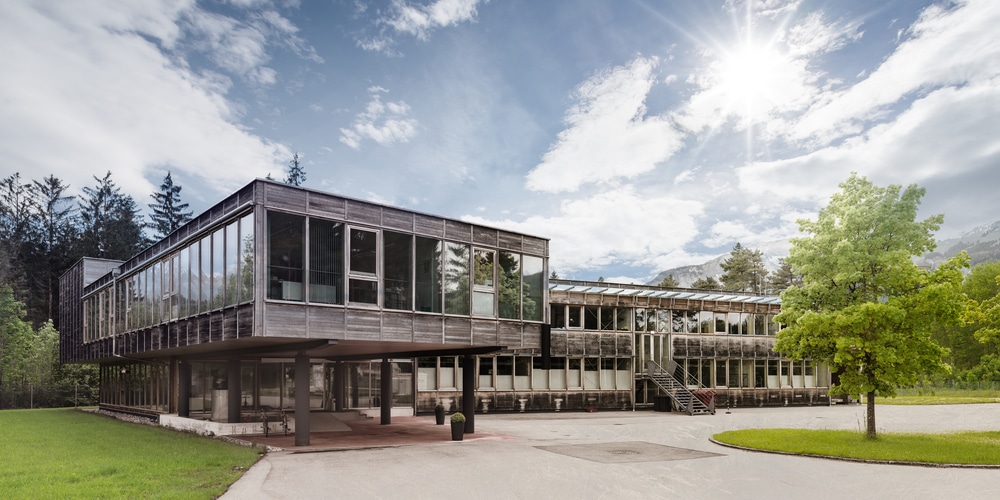by U.B. Hawthorn
Passive Houses are designed to maximize energy conservation through the precise construction of a superinsulated, airtight building envelope that keeps indoor temperatures stable, saving home owners 60 to 70 percent of overall energy consumption and 90 percent of space heating. Early passive houses were first built in the 1970s and have since been innovated to what we have today. Katrin Klingenberg is co-founder and executive director of Passive House Institute US, the organization certifying Passive Houses in the United States.
Why would someone who wants to build sustainably focus on improving the building envelope rather than go another route?
The greenest energy to use is the energy we don’t use at all. All forms of energy have carbon emissions associated with them so the less energy we use to start with the less carbon is being emitted into the air.
The Passive House building envelope is built according to climate. It is super insulated in cold and very cold climates and is well insulated in mixed and hot climates. Airtightness is a special concern to ensure that there will be no moisture occurring in the wall. The Passive House envelope is extremely airtight—0.6 ACH50, meaning 0.6 air changes at a test condition of 50 pascal.
Once we have taken all steps to optimize conservation first, then we can add active photovoltaic or wind system and then even become a plus energy house which means we are offsetting carbon that others might still be using. Passive house envelopes help to avert climate change.
Your website states: “A “passive” house achieves overall energy savings of 60-70% and 90% of space heating without applying expensive “active” technologies like photovoltaics or solar thermal hot water systems.” Is that a guarantee or are there regional or other variations?
Without photovoltaics that is a guarantee. PV is not being calculated into the energy balance. It is added once the energy balance is completed and is considered to be a form of savings—savings to offset the last remaining energy that is being used in a house. The goal is the most optimized solution to get to zero energy or plus energy homes by using conservation first before applying active technologies.
Solar thermal systems can be calculated into the energy balance to optimize conservation. This system could be in colder regions with very good solar radiation, such as the south of the United States, and could be more effective than superinsulation. Solar thermal system sizing is therefore climate dependent.
What would the difference in savings be for a home in Alaska vs. the standard?
As of right now, the standard is the same everywhere. The envelope is optimized to use the same energy in any climate per sq. ft. So, different climate envelopes will have different R-values, but the energy metric will be the same everywhere as it stands right now. This is very difficult to do and the North American Passive House community of professionals is currently debating to refine the standard slightly for climates where it is either too difficult or too easy to reach the standard.
Are there any misconceptions about Passive Houses?
Yes, that it has to be a box, that it can only have limited windows, that one cannot open the windows. Also, that it only works in cold climates. All not true.
I’ve read that a typical premium on building a Passive House is 5 percent in Europe vs. 10 percent in the U.S. Do you see this gap being closed anytime soon?
It’s unfortunately a bit more complicated. The number of additional upfront cost depends on the experience of the consultant and builder. If they all are doing their first project, the likelihood is that it is quite a bit more expensive than only 10 percent more.
Secondly, it depends on the size of the project and in which climate it is located. The smaller the size (1000 sq. ft home) and the colder the climate the higher the upfront premium. In Illinois the best we could do on such a small building was 12 percent upfront cost.
If you have a large building, multi-family in Boston for example, there they can do 5 percent additional cost compared to standard. In a mild climate such as Virginia some builders have claimed that they were even able to reduce the cost for Passive House below a comparable code level project.
It really depends.
How hard is it to get Passive House certified materials in the U.S., and is that changing quickly?
You don’t need passive house certified materials! This is a market scheme to promote expensive European materials over U.S. manufactured goods. All materials that one needs are available in North America today and they are being made here as well and they are more affordable!
Is there anything else you’d like to add?
Superinsulating the envelope is changing the conventional understanding of the moisture profile in a wall. The designer needs to be very careful to plan for a wall assembly that works in a specific climate to not be in danger of having serious moisture issues developing over the years.
This article originally appeared on Green Home Gnome.
![]()


